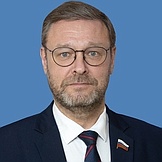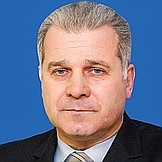Regional flags and emblems


PROFILE
Established 4 November 1920 as the Mari Autonomous Region. It became the Mari ASSR in 1936, then the Mari SSR in 1990, and has been the Republic of Mari El since 1992.
Capital Yoshkar-Ola
The Republic of Mari El is part of the Volga Federal District
Area 23, 400 sq km
Population 666 000 (2025)
Ethnic groups
(2020 National Census, %)
Russian – 52,51
Mari – 40,09
Tatar – 4,77
Other – 2,63
Administrative divisions (2024)
Municipal districts – 14
City districts – 3
Rural towns – 6
Rural districts – 102
Geography and climate
The republic is located in the centre of the European part of Russia, in the Volga River basin. The eastern left bank is a hilly plain that goes westward to the Mari bog lowland; the right bank is the outskirts of the Volga Upland.
The length of the territory is 150 km from north to south and 275 km from east to west. It borders on the Republic of Tatarstan, the Chuvash Republic and the Kirov and Nizhny Novgorod regions.
There are 476 large and small rivers and about 700 lakes with an area of 2,752 ha. Of all the rivers, only the Volga and Vyatka are navigable. The main river is the Volga with its tributaries Vetluga, Bolshaya and Malaya Kokshaga, Ilet and Rutka.
The climate is temperate continental. January temperatures average –9.2°C, July temperatures average +17.2°C. Average precipitation in January is 28 mm; average precipitation in July is 134 mm. Vegetation: coniferous and deciduous forests. Soils: sod-podzolic.
The Republic of Mari El has 49 protected areas, including the Bolshaya Kokshaga Nature Reserve, Mari Chodra National Park, eight nature sanctuaries of regional importance, 38 natural monuments of regional importance, and the botanical garden of Mai State Technology University. The protected areas cover a total of 95,960 ha.
Government
The legislative branch is represented by the State Assembly of the Republic of Mari El, which is the representative and only body of legislative authority in the republic.
The State Assembly has 52 deputies elected for five years, with 39 of them running in single-mandate constituencies and the other 13 in the republican electoral district, where winners are identified in proportion to the number of votes cast for lists of candidates nominated by electoral associations.
The current State Assembly was elected in September 2024. Its term expires in September 2029.
The Head of the Republic of Mari El is the republic’s highest-ranking official and head of the regional Government, elected for five years by Russian citizens who permanently reside in the region. The term of office of the current incumbent expires in September 2027.
The Head of the Republic of Mari El forms the Government of the Republic of Mari El, which is the supreme and permanent body of executive authority.
Economy and natural resources
The leading industries of the Republic of Mari El are machine building and metal processing (production of metal cutting tools, instruments, automation equipment and technological equipment for timber harvesting and timber processing). Forestry, wood processing, the pulp and paper industry, consumer goods production and the food industry are developed. The largest enterprises are Yoshkar-Ola forest engineering plants, Kontakt SC, Mari Pulp-and-Paper Manufacture (Volzhsk) and Marbiopharm. The main industrial hubs are the cities of Yoshkar-Ola, Volzhsk, Kozmodemyansk and Zvenigovo. Shipping is carried out along the Volga and Vetluga rivers.
The leading branch of agriculture is livestock breeding (dairy and beef cattle breeding, sheep and pig breeding) and poultry farming. Crop production is dominated by rye, buckwheat, legumes, oats, wheat, barley, flax, fodder crops, фas well as vegetable and potato growing. Agricultural production is bolstered by the creation of large poultry and livestock breeding agribusiness holdings: Akashevskaya Poultry Farm, Yoshkar-Ola Meat Processing Plant, Ptitsefabrika, Ptichy Dvor, Rassvet Agricultural Company.
The republic boasts the Klenovogorsk mineral springs, as well as springs in the village of Krasnogorsky, whose water is used for treatment at recreation and health centres.
About 40 investment projects are implemented in the Republic of Mari El aimed at modernising and creating new production facilities and technical renovation. The total investment amounts to about 36 billion roubles. The largest share of the total amount of investment is spent on the purchase of machinery, equipment, vehicles, production and business equipment. Most of the investment in fixed capital is made by the processing and food industries.
Culture and tourism
The most important aspect of the Republic of Mari El’s cultural policy is theatre art. Currently, seven theatre and entertainment companies operate in the republic: the Shketan Mari National Theatre, Konstantinov Academic Russian Drama Theatre, Mari Young Spectator’s Theater, Sapayev Mari State Opera and Ballet Theatre, Republican Puppet Theatre, Republican Gornomariisky Drama Theatre, and Eshpai Mari State Philharmonic.
There are 30 museums in the republic, such as the Grigoryev Art and History Museum, the ethnographic museum of peasant labour and life in the city of Kozmodemyansk, the Sheremetev’s Castle manor and architectural museum-reserve in the village of Yurino, the collections of which are updated every year with new and interesting exhibits. At present, the Grigoryev Art and History Museum is famous for its collection of original paintings by Russian artists of the 19th and 20th centuries.
The Volga River runs throughout the region extending 155 km. On its shores are the museums of Kozmodemyansk and the Sheremetev Castle in the village of Yurino.
The republic’s national treasure is lakes. Caved-in, intermountain and floodplain (more than 600 in total), they invariably attract people with their summer coolness and the purest refreshing water. Located on Klenovaya Gora, Mari Chodra National Park is an attractive natural and territorial complex. There is also the Klenovaya Gora recreation centre, the Zelyony Klyuch spring, and the lakes of Yalchik, Mushanyer, Glukhoye and Konanyer. The republic is also home to the oldest oak named after Yemelyan Pugachev. According to legend, Yemelyan Pugachev stayed for a night with his troops here before the last battle march to Kazan in 1774.
In recent years, many new tourist sites, sports facilities and monuments have appeared in the republic, which also attracts tourists. Among them are the Tsarevo-Koksha Kremlin cultural and historical complex, the Obolensky-Nogotkov Square architectural ensembles, Malaya Kokshaga River Embankment in Yoshkar-Ola, the Razdolye tourist complex in the Kilemarsky District, the Verkhovoi Kruiz tourist complex in the Sovetsky District and the Staraya Melnitsa tourist camp in the Morkinsky District. There are five recreational zones for sports, health and educational tourism. Pilgrim excursions to holy places (monasteries, temples and holy springs) and cult groves are very popular.


